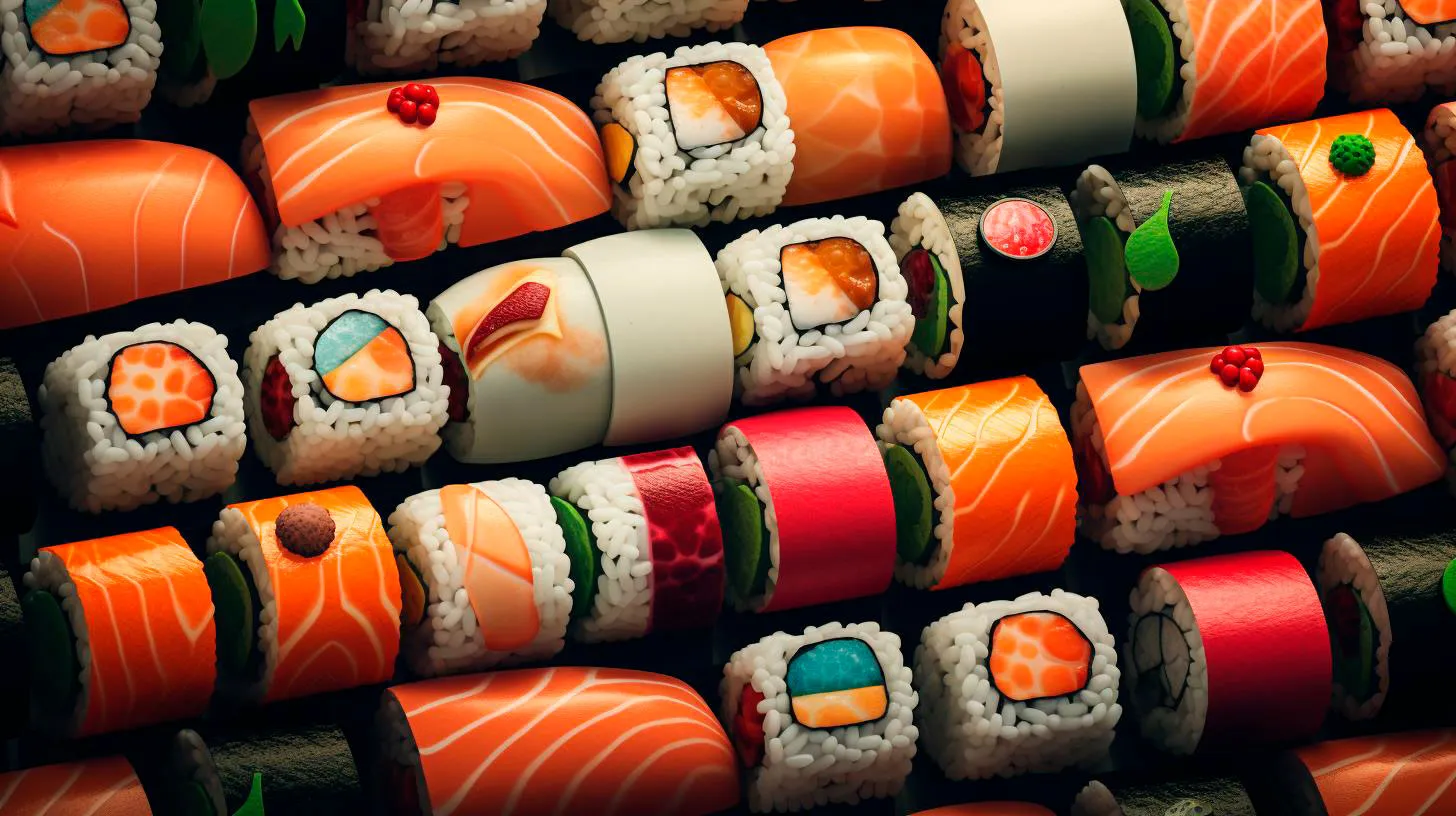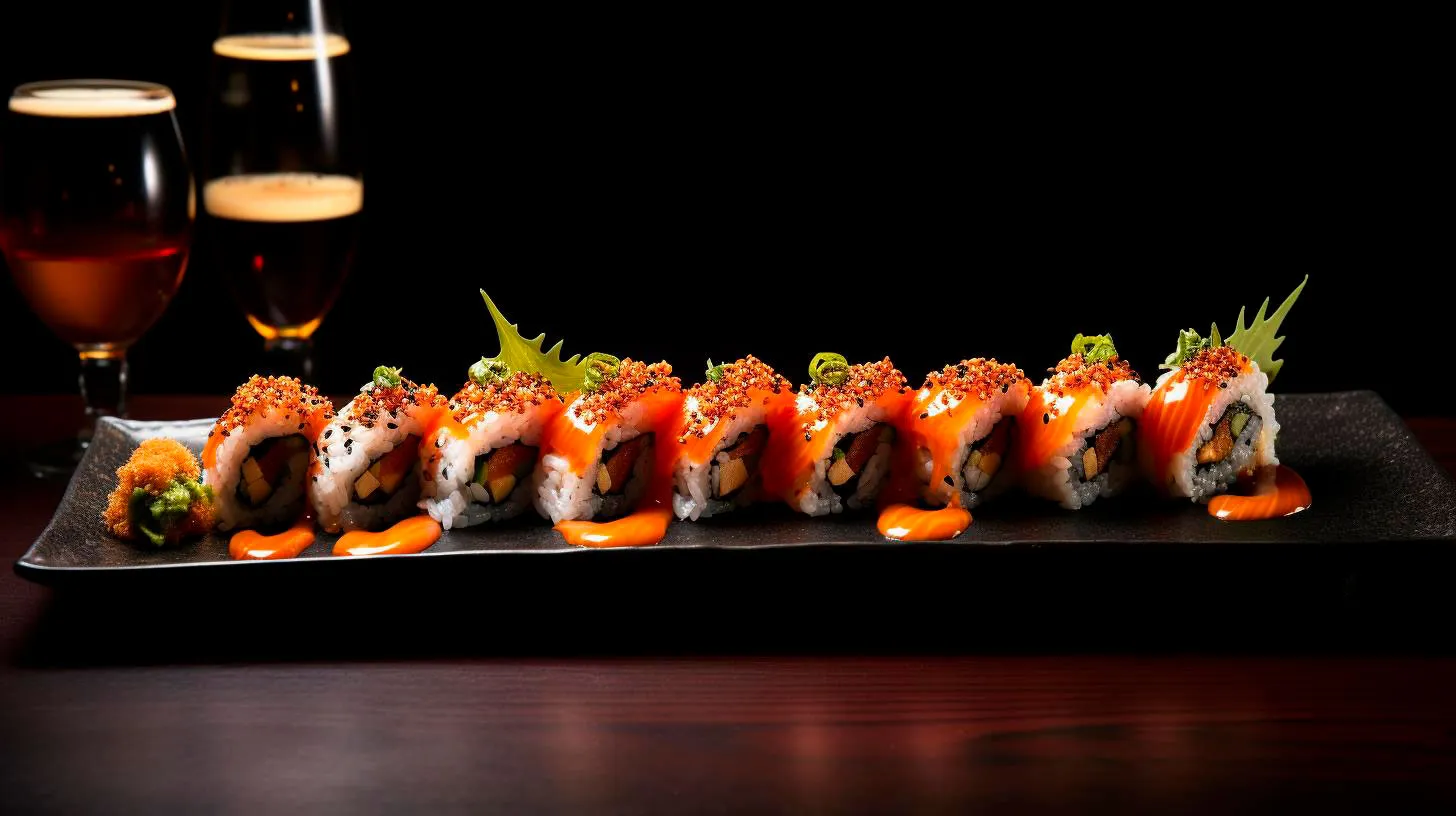Enhancing Food Safety Fish Inspection Techniques for Sushi
In this article, we will explore the importance of fish inspection techniques and the advancements that have been made to enhance food safety in sushi.
The Significance of Fish Inspection in Sushi
Fish inspection plays a pivotal role in sushi establishments, as it guarantees the safety and quality of the fish used as ingredients. The main purpose of fish inspection is to identify potential foodborne pathogens and contaminants that could pose health risks to consumers. By conducting thorough inspections, sushi chefs and restaurateurs can minimize the probability of food poisoning or other seafood-related illnesses.
Some key reasons why fish inspection is vital include:
- Quality Assessment: Fish inspection helps in evaluating the freshness and overall condition of the fish used in sushi preparation. This ensures that customers are served high-quality and safe seafood products.
- Disease Detection: Inspecting fish helps identify any signs of disease or parasites, such as bacteria, viruses, and other harmful organisms. Detecting these issues early can prevent the spread of diseases and protect consumers from potential health hazards.
- Regulatory Compliance: Adhering to strict food safety regulations is crucial for all food establishments, including sushi restaurants. Proper fish inspection techniques help comply with regulatory requirements and maintain a good reputation for the business.
Advancements in Fish Inspection Techniques
With the advancement of technology and increased awareness of food safety, several innovative fish inspection techniques have emerged. These techniques aim to enhance the accuracy, efficiency, and reliability of fish inspection processes in the sushi industry.
1. DNA-Based Fish Species Identification
Accurate species identification is crucial to ensure that the fish used in sushi matches its label. DNA-based techniques, such as DNA barcoding, provide a reliable method for species identification. This approach uses a specific gene sequence to identify the fish species, enabling sushi chefs and suppliers to authenticate the origin of the fish accurately.
Key Takeaway: DNA-based fish species identification ensures that the fish used in sushi is authentic, preventing mislabeling and potential health risks associated with consuming incorrect species.
2. Rapid Pathogen Detection
Countering potential foodborne pathogens is essential to maintaining food safety standards. Traditional testing methods can be time-consuming, delaying the identification of pathogens. However, rapid detection techniques, such as polymerase chain reaction (PCR), allow for quick and accurate identification of pathogens like bacteria and viruses.
Key Takeaway: Rapid pathogen detection techniques enable sushi establishments to promptly identify and mitigate the risks associated with foodborne pathogens, minimizing the chances of foodborne illness outbreaks.
3. Chemical Contaminant Testing
Chemical contaminants, such as heavy metals and toxins, can have detrimental effects on human health. Advanced testing methods, such as mass spectrometry, offer precise identification and quantification of harmful substances in fish. These techniques enable sushi restaurants to ensure the safety of their seafood products.
Key Takeaway: Chemical contaminant testing helps prevent risks associated with consuming contaminated fish, safeguarding the health of sushi lovers.
Conclusion
Implementing effective fish inspection techniques is vital for sushi restaurants to maintain food safety standards and provide consumers with high-quality, safe seafood. The advancements in fish inspection, including DNA-based species identification, rapid pathogen detection, and chemical contaminant testing, have significantly enhanced the safety and quality of fish used in sushi preparation.
By prioritizing fish inspection, sushi establishments can build trust with customers, comply with regulatory requirements, and protect public health. As the popularity of sushi continues to grow, it is crucial to invest in the latest fish inspection technologies to ensure that consumers can enjoy their favorite delicacy without worrying about their safety.
Essential Skills Learning Fish Inspection for Sushi Preparation
Why is Fish Inspection Important?
Before we delve into the art of inspecting fish for sushi, let’s understand why it is crucial. Sushi is all about the raw fish, and any compromise in quality can potentially ruin the entire dish. Inspecting fish ensures freshness, taste, and most importantly, safety for consumers. By mastering fish inspection, sushi chefs can ensure they serve top-notch sushi that delights the taste buds without compromising on health and safety.
Key Fish Inspection Tips for Sushi Preparation
Inspecting fish for sushi involves assessing various factors like freshness, texture, appearance, and smell. Here are some key tips to help you master this skill:
1. Assess the Fish’s Freshness
- Look for clear, bright, and bulging eyes, a sign of freshness.
- Check for vibrant and shiny skin, indicating the fish is recently caught.
- Press the flesh gently – it should bounce back without leaving an indentation.
2. Examine the Texture and Color
- Inspect the fish’s texture – it should feel firm and not slimy or mushy.
- For sushi, choose fish with a translucent appearance, as it indicates freshness.
- Avoid fish with discolored or dull patches, which can indicate spoilage.
3. Pay Attention to the Smell
- Fish should not have a strong, fishy smell.
- A fresh fish will have a mild sea-like scent.
- Avoid any fish that smells sour or ammonia-like.
4. Trust Reliable Suppliers
- Understand the importance of sourcing fish from trusted suppliers who follow sustainable and ethical practices.
- Establishing a strong relationship with reputable suppliers ensures a consistent supply of high-quality fish.
- Ask questions about the fish’s origin and handling process.
Advantages of Mastering Fish Inspection Skills
By mastering fish inspection for sushi preparation, you gain several advantages:
- Enhanced flavor and taste: Fresh fish ensures the best flavors and enhances the overall taste of your sushi creations.
- Food safety: Proper inspection minimizes the risk of serving fish that may cause foodborne illnesses.
- Customer satisfaction: Consistently serving high-quality sushi will leave your customers satisfied and keep them coming back for more.
- Cost-effectiveness: By inspecting fish properly, you can avoid purchasing spoiled fish, preventing unnecessary expenses.
Key Takeaways
Inspecting fish for sushi is an essential skill that all sushi chefs should master. Here are the key takeaways from this article:
- Fish inspection ensures the quality, freshness, and safety of sushi.
- Assessing factors like freshness, texture, appearance, and smell is crucial.
- Mastering fish inspection skills leads to enhanced flavor, food safety, customer satisfaction, and cost-effectiveness.
Remember, practice makes perfect. As a sushi chef, continuously honing your fish inspection skills will contribute to the success of your sushi creations and the satisfaction of your customers. So, dive into the world of fish inspection and elevate your sushi game!
Mastering the Art Proper Fish Inspection for Sushi Making
As a tech blogger, I understand the significance of incorporating SEO-optimized content. Hence, this article aims to provide comprehensive insights into mastering the art of fish inspection for sushi making, ensuring you can produce delectable sushi every time while prioritizing food safety.
The Importance of Proper Fish Inspection
Fish serves as the centerpiece of sushi, and its freshness plays a vital role in maintaining the quality and taste of the final dish. By properly inspecting the fish, sushi chefs can identify any potential issues and ensure only the highest quality ingredients are used. Here are a few reasons why proper fish inspection is crucial:
- Quality assurance: Through inspection, chefs can determine the quality of the fish, assessing its texture, color, and smell. This helps in maintaining the integrity and freshness of the fish, resulting in exceptional sushi.
- Food safety: Proper inspection ensures that the fish used in sushi is free from any harmful bacteria or parasites, reducing the risk of food-borne illnesses.
- Enhanced flavor: Fresh fish delivers a delightful taste that elevates the overall sushi experience. Proper inspection guarantees that only the freshest fish is used, enhancing the flavor profile.
Mastering Fish Inspection Techniques
To ensure top-notch sushi quality, mastering fish inspection techniques is essential. Here are some key steps to follow:
1. Assessing Freshness
The freshness of fish is paramount. To assess it, consider the following factors:
- Color: Fresh fish typically has vibrant, translucent flesh.
- Texture: The fish should have a firm texture and moist appearance.
- Smell: A fresh fish emits a light, oceanic odor, while a fish with an acrid smell might be spoiled.
2. Checking for Parasites
Parasites present in fish can cause health hazards and must be identified. Some common parasites to look out for include:
- Anisakis: These small, white worms are often found in marine fish and can cause allergic reactions if consumed.
- Tapeworms: These ribbon-like parasites are typically found in raw or undercooked freshwater fish.
3. Examining Scales and Eyes
Inspecting the scales and eyes of the fish can provide further insights into its freshness:
- Scales: Check for shiny, intact scales that adhere closely to the skin.
- Eyes: Clear, bright eyes indicate freshness, while cloudy or sunken eyes suggest a lack of freshness.
Key Takeaways
Inspecting fish properly is a fundamental skill for sushi making. Here are the key takeaways to remember:
- Fish inspection ensures quality assurance, food safety, and enhanced flavor.
- Assess freshness through color, texture, and smell.
- Identify common parasites like Anisakis and tapeworms.
- Examine scales and eyes to gauge freshness.
By mastering the art of fish inspection, sushi chefs can guarantee remarkable sushi experiences for their customers. Prioritizing quality and food safety through proper fish inspection is a must to elevate your sushi-making skills.
Ensuring Quality Effective Fish Inspection Methods for Sushi
The Importance of Fish Inspection for Sushi
With the increasing demand for sushi, maintaining high standards of fish quality is crucial to protect consumer health and maintain industry reputation. Fish inspection plays a vital role in ensuring the seafood used is fresh, free from contaminants, and safe for consumption.
Fish inspection methods have evolved over time to keep up with industry demands and advancements in technology. The goal is to identify potential issues with the fish, such as parasites, bacteria, or toxins, before they reach the sushi preparation stage.
Types of Fish Inspection Methods
1. Visual Inspection:
Visual inspection is the first step in fish quality control. Trained inspectors examine the fish’s appearance, looking for signs of freshness, such as clear and bright eyes, vibrant skin color, and intact scales. Any unusual or off-putting visual attributes are flagged for further investigation.
2. Smell Testing:
Another important aspect of fish inspection is smell testing. Fish should have a clean sea-like odor, and any foul or ammonia-like smells could indicate spoilage or bacterial contamination. Trained professionals can quickly identify problematic fish by their distinct odors.
3. Molecular Testing:
Molecular testing involves analyzing the fish sample’s DNA to verify its species and origin. This method ensures that the fish being used for sushi preparation is correctly labeled and complies with industry standards. DNA testing also helps prevent the use of endangered or illegally caught fish.
4. Microbiological Testing:
To prevent foodborne illnesses, microbiological testing is performed on fish samples to detect the presence of harmful bacteria, such as Salmonella or Listeria. These tests assess the bacterial load on the fish and ensure that it falls within acceptable limits for safe consumption.
5. Parasite Inspection:
Parasite inspection is crucial, especially for raw fish used in sushi. Fish, particularly those caught in the wild, may harbor parasites such as Anisakis. Thorough visual and microscopic inspection helps identify and remove any parasites that might be present, ensuring a safe dining experience.
The Advantages of Effective Fish Inspection Methods
Implementing robust fish inspection methods in the sushi industry offers several advantages:
- Ensuring consumer safety by minimizing the risk of foodborne illnesses
- Protecting the reputation of sushi establishments by delivering consistent quality
- Complying with industry standards and regulations
- Providing transparency and trust to consumers about the fish used in their sushi
Key Takeaways
Fish inspection is a critical step in maintaining the quality and safety of fish used in sushi. By employing visual inspection, smell testing, molecular testing, microbiological testing, and parasite inspection, sushi establishments ensure that their seafood is fresh, free from contaminants, and safe for consumption. Implementing these effective fish inspection methods not only safeguards consumer health but also protects the reputation of the sushi industry as a whole.



